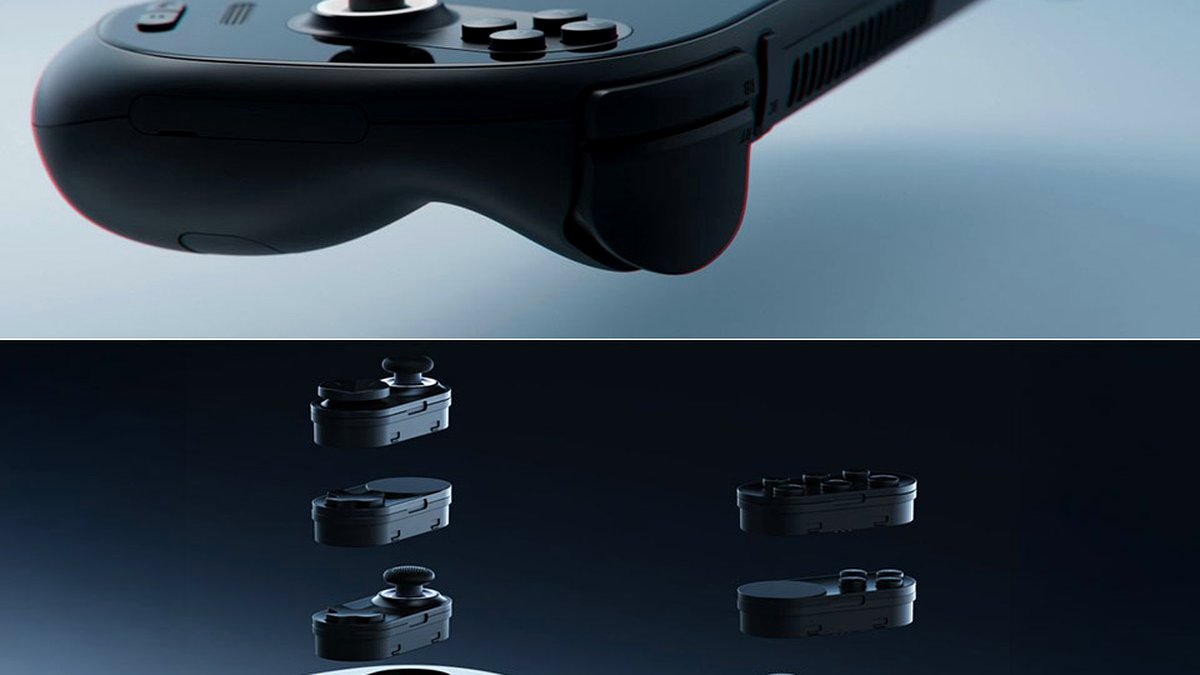Modular Design Innovation
The handheld gaming PC market has seen remarkable innovation, but AYANEO's latest offering breaks new ground with a genuinely modular design. The AYANEO 3, launched via Indiegogo in January 2025, introduces swappable controller modules and premium specifications that challenge the one-size-fits-all approach dominating the portable gaming space.
The AYANEO 3's defining feature lies in its "Magic Modules" - swappable controller components that allow users to customize their gaming experience. Players can choose between a traditional touchpad module or the specialized "fighting module" featuring an 8-way d-pad and six action buttons optimized for fighting games and retro gaming scenarios.
This modular approach extends beyond simple customization. The device incorporates Hall effect joysticks and triggers throughout, along with rear buttons, all housed within a compact 289.8 x 115 x 22.4 mm frame. The ability to physically reconfigure the device represents a significant departure from fixed-layout competitors.
Technical Specifications
AYANEO offers the device with two distinct AMD x86-64 processor options. The base configuration features the AMD Ryzen 7 8840U, utilizing Phoenix architecture with Zen 3+ cores. Premium configurations step up to the AMD Ryzen AI 9 HX 370, powered by the newer Strix Point architecture with Zen 5 cores and an RDNA 3.5-based Radeon 890M integrated GPU.
Memory configurations scale from 16GB to an impressive 64GB of LPDDR5X-7500 MT/s RAM, paired with M.2 2280 PCIe 4.0 storage options ranging from 512GB to 4TB. All models feature a 49Wh battery designed to balance performance with portability.
The AYANEO 3 offers both LCD and OLED display options at no additional cost - a rare approach in the handheld gaming market. The LCD variant delivers 1920×1080 resolution with 500 nits brightness, 100% DCI-P3 color coverage, and support for both 60Hz and 120Hz refresh rates with 7ms response times and variable refresh rate (VRR) support.
The OLED option pushes specifications further with 800 nits peak brightness, 150% sRGB/110% DCI-P3 color reproduction, and refresh rate options spanning 60Hz, 90Hz, 120Hz, and 144Hz. Both displays measure 7 inches with 315 PPI pixel density.
Connectivity sets the AYANEO 3 apart from mainstream competitors through inclusion of both USB4 and OCuLink ports. The OCuLink connection enables external GPU support - a feature rarely seen in handheld gaming devices that opens possibilities for desktop-class gaming performance when docked.
Market Positioning and Pricing
The AYANEO 3's pricing reflects its premium positioning, with early bird Indiegogo pricing starting at $699 for the base 16GB/512GB Ryzen 7 8840U configuration, escalating to $1,799 for the top-tier 64GB/4TB Ryzen AI 9 HX 370 "Retro Power" edition. Retail pricing adds $200-$300 to these figures across all configurations.
This positions the device significantly above mainstream options like the Steam Deck, while competing directly with premium alternatives such as the OneXFly F1 Pro, currently available on Amazon for $1,099 and shipping since November 2024. The OneXFly's immediate availability contrasts with AYANEO's crowdfunding approach and projected April 2025 delivery timeline.
The AYANEO 3's modular design represents genuine innovation in a market increasingly dominated by iterative improvements. The ability to swap controller configurations addresses real user needs, particularly for fighting game enthusiasts and retro gaming scenarios where traditional dual-analog layouts prove suboptimal.
However, the crowdfunding delivery model introduces uncertainty. While AYANEO has an established track record in handheld gaming devices, the April 2025 delivery timeline places buyers at risk compared to immediately available alternatives. The premium pricing, while justified by the modular features and high-end specifications, may limit market appeal beyond dedicated enthusiasts.
The inclusion of OCuLink connectivity demonstrates forward-thinking design, potentially extending the device's utility beyond purely portable scenarios. This feature could prove particularly valuable as external GPU solutions become more accessible and affordable.
The AYANEO 3 represents a significant step forward in handheld gaming PC design, introducing genuine modularity to a market that has largely embraced fixed configurations. While the premium pricing and crowdfunding timeline present considerations for potential buyers, the device's innovative approach to customization and robust x86 performance specifications establish it as a noteworthy entry in the evolving portable gaming landscape.
For users seeking maximum flexibility and willing to invest in premium features, the AYANEO 3 offers capabilities unavailable elsewhere in the handheld gaming market. The question remains whether modular design will prove a lasting innovation or a niche appeal - but AYANEO's bold approach ensures the conversation around handheld gaming PC design continues evolving.
Sources
Note: All sources have been verified for accuracy and editorial standards compliance.
